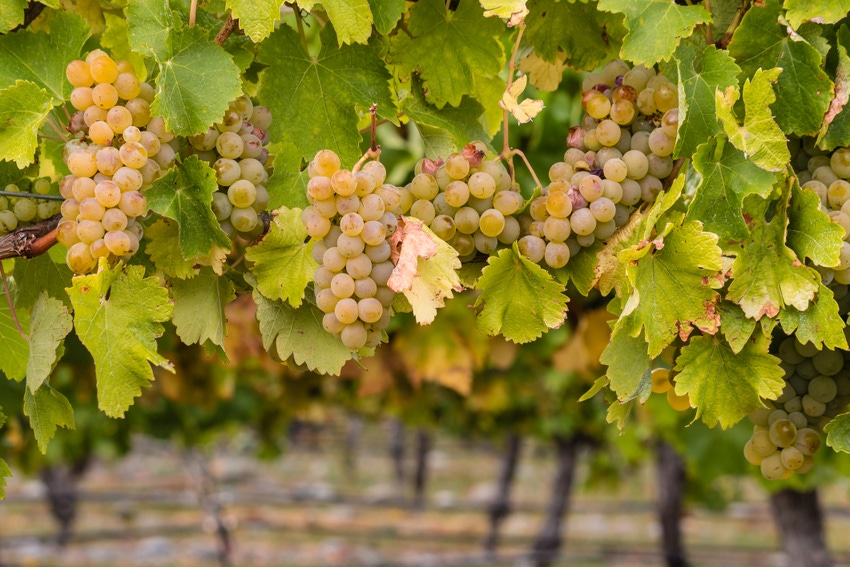
This year’s temperate, cooler-than-normal summer, free of any typical heat spikes, has played out well for the quality of this year’s Santa Cruz Mountains’ wine grape crop, reports viticulture consultant Prudy Foxx.
Drawing on more than 30 years of experience growing grapes, her company, Foxx Viticulture, Santa Cruz, Calif., works with growers throughout the 1,500-acre appellation. It straddles the mountains between Monterey Bay and the Silicon Valley.
“The anthocyanin levels in the grapes this year are high, contributing to the deep, rich color of the grapes across the board for every red variety,” she says. “In addition, throughout the harvest, I was tasting the grapes and was amazed at how thick and chewy the skins were. The aromatics during fermentation are sublime. It was a very unique and wonderful vintage.”
Timing of this year’s harvest, which began in her vineyards Aug. 10 on the east side of the mountains near Saratoga, Calif., was closer to normal and two weeks later than last year’s early start. The last grapes harvested in her vineyards, a field of Petite Sirah in the Corralitos area in southern Santa Cruz County, were picked on Oct. 12.
Production this year, overall, was only a little below average. That’s in contrast to last year when yields in some Pinot Noir blocks nose-dived to 50 to 80 percent below average; that is, if they were harvested at all.
“Most people are pretty happy about the 2016 yields,” she says. “The wines are now in the tanks and the wineries are full.
The slightly-less-than-average yields are more a reflection of smaller cluster sizes than fewer clusters, Foxx notes. For example, despite a fairly good set this year, cluster size in her Chardonnay blocks was down.
On the other hand and for whatever the reason, Syrah production suffered from a weak set due to limited flower development.
Foxx suspects the generally smaller cluster sizes this year represent the cumulative effects of the previous several years of drought stress combined with this year’s cooler weather. “There wasn’t enough heat early on in the season to encourage good seed development or later in the season for the fruit to size properly,” she says.
For much of August her growers on the west side of the Santa Cruz Mountains were challenged by foggy conditions and morning drizzle that increased the risk of botrytis in their fields.
Very heavy fog in the morning left the vine canopies soaking wet until the sun came out to dry the vines in the afternoon, she notes. Because of the smaller vineyards in this region, growers were able to aid the drying process by going down the vine rows every few days using leaf blowers or blowers on their sprayers to dry out the canopies.
“Growers who dried their canopies or applied their fungicides in a timely manner and opened up their canopies were able to keep the Botrytis pressure low,” Foxx says.
Despite this year’s late winter rains and fairly wet spring weather, some growers overestimated the amount of water available in their soils to carry their crop through the late part of the season, she says. As a result, in some cases, vines became stressed, causing berries to shrivel, especially in blocks of Pinot Noir.
The situation highlighted the value of timely and site specific applications of small amounts of water – at rates of about 4 gallons in a month in sandier soils – as the grapes neared maturity, Foxx says.
Understanding individual vineyard block soil type and how it absorbs and retains water was crucial this year, she said. For example, it is much harder to wet a clay-based soil once it has dried out, while sandier soils respond to light watering very well.
Such differences were important in late September. That’s when temperatures soared to as high as 107 degrees on some days, while humidity readings fell to near zero.
“The vines function as a hydraulic system,” she says. “If the system can’t access water, the berries will shrivel during intense heat events. Where vines were already in good shape, and growers put on a little water prior to the heat spike, the grapes ripened to perfection.”
About the Author(s)
You May Also Like




